"We Need To Get It Right All The Time": Brave Hearts Behind The 34kg Bomb Suits
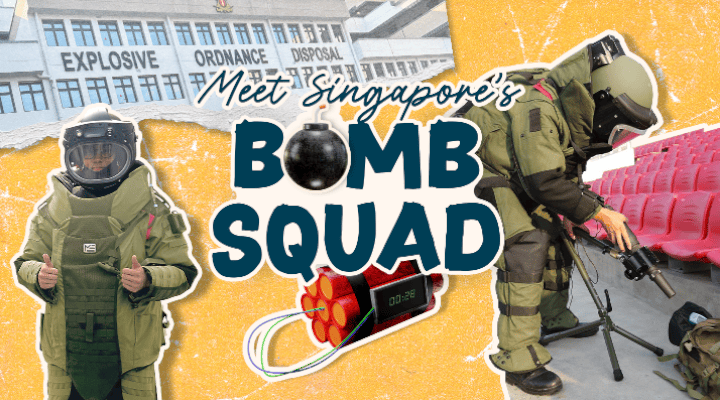
A chilling fear courses through the veins of every member of Singapore’s Explosive Ordnance Disposal (EOD) unit each time they approach a bomb.
Even for First Warrant Officer (1WO) Peter Chong, who has dedicated 18 years to the 36th Battalion of Singapore Combat Engineers’ (36 SCE) EOD unit, this fear is a constant companion.
“We know how it works, but we can never be certain if and when it might prematurely detonate,” 1WO Chong reveals.
This experience has given birth to what EOD operators call the “longest walk” – a term that encapsulates the final steps they take to confront potentially explosive items. “That’s when you start having reflections on life. It may be a short 30-second walk, but it feels like an eternity.”
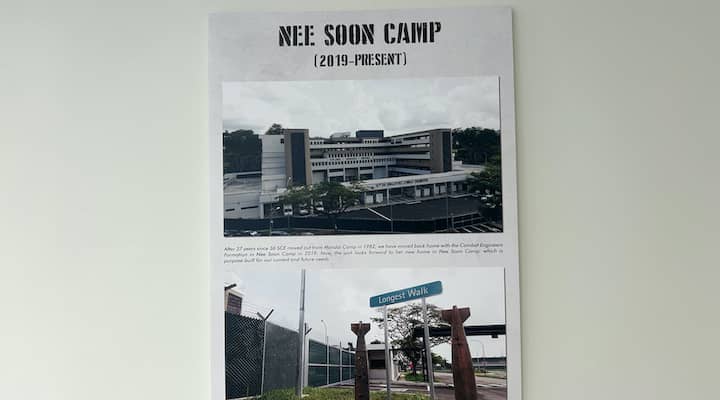
These two words – Longest Walk – are so deeply embedded in their work that they are emblazoned on a sign at Nee Soon Camp, home of the EOD unit. This sign serves as a constant, poignant reminder of the immense challenges they confront each day.
EOD: The First Line of Defence Against Explosives
Established in 1969, the EOD started out as the Bomb Disposal Unit in the Singapore Armed Forces (SAF). In the early days, the unit was relatively small, with a team of only six personnel.
Over the past 54 years, the EOD unit has continued to play a vital but discreet role in ensuring the safety and security of the nation, serving as Singapore’s primary line of defence against explosive threats.
Lieutenant-Colonel (LTC) Ng Tee Yang, the commanding officer of the EOD unit, provides an overview of their role: “We are the only national responder to any explosive threat in Singapore. Whether it’s explosive ordnance or improvised explosive devices (IEDs), our role is to eliminate these threats.”
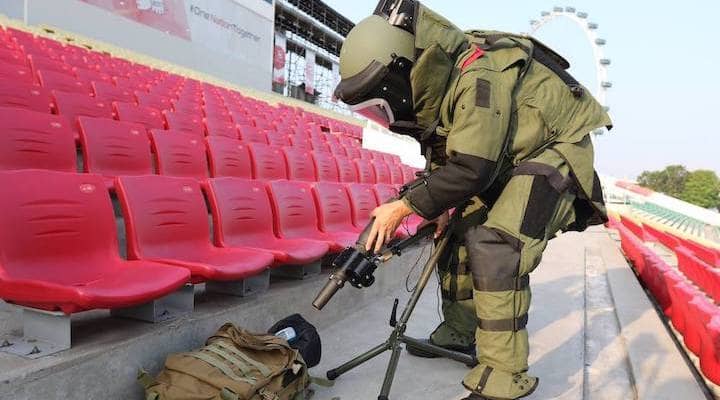
In peacetime, the EOD unit has two main types of operations – Chemical, Biological, Radiological, and Explosive (CBRE) preventive security sweeps for high-profile events like the National Day Parade and Singapore Formula One Grand Prix, as well as response to the discovery of unexploded ordnances and IEDs.
In times of war, the EOD unit plays similar roles in safeguarding and protecting friendly forces from explosive danger. However, these wartime operations are markedly different from peacetime, as they often involve newer weaponry and more hazardous explosive devices.
This dual responsibility – peacetime threat management and wartime support – underscores the critical importance of the EOD unit in Singapore’s overall defence strategy.
Key Traits of EOD Operators
As part of the selection process, aspiring candidates must first undergo a series of assessments, including psychometric and physical tests.
The physical tests are demanding, requiring them to navigate an obstacle course while wearing a 34kg bomb suit. This assesses their ability to perform under the weight and constraints of the protective gear.
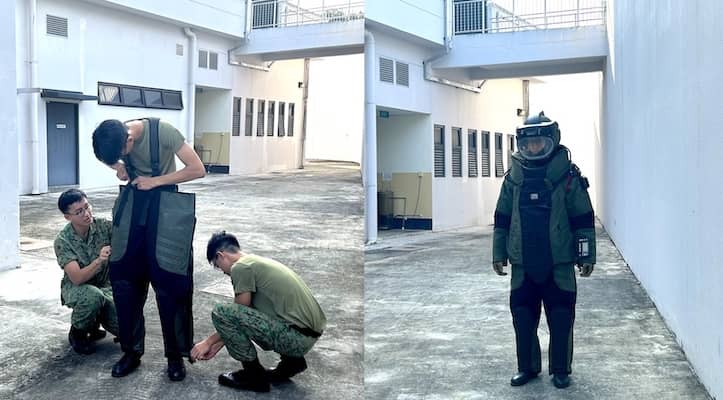
“Some people feel claustrophobic in the bomb suit as it puts you in a very closed environment,” says LTC Ng.
In the final stage of the assessments, candidates are tested beyond physical endurance and tasked with solving challenging puzzles under extreme pressure.
While they do so, the trainers distract them with questions, mimicking the chaos they might encounter during real operations. This not only evaluates their problem-solving skills, but also their ability to multitask and remain level-headed when lives are on the line, says LTC Ng.
The combination of the obstacle course and the puzzle tests assesses not only physical and mental strength, but also the adaptability and critical thinking skills necessary for the job. EOD operators must possess a unique blend of logic, problem-solving skills, and the ability to stay calm under duress.
Realism Is a Core Aspect of Their Training
Upon successfully passing the selection process, trainees enter a training programme that includes both local and overseas components.
Local training includes Section Response Training, where they are exposed to various explosive threats in realistic scenarios. They also undergo IED training, where they get hands-on experience with different types of IEDs, and learn about their components, trigger mechanisms, and safe disposal techniques.
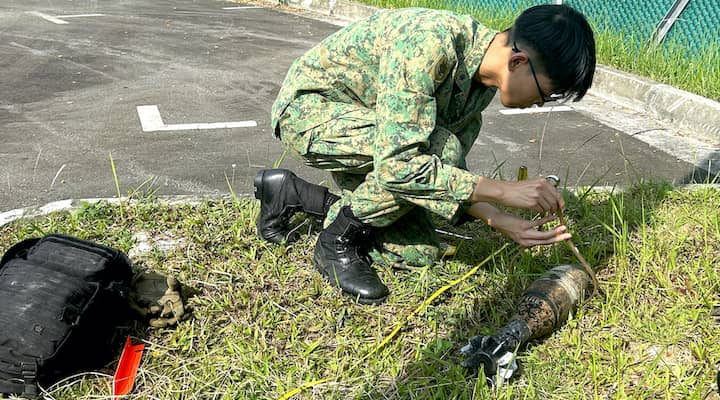
Beyond these, trainees engage in live firing exercises to familiarise themselves with firearms and explosives, enhancing their understanding of the tactical aspects of EOD operations.
They also participate in overseas exchange programmes and courses, exposing them to different environments, technologies, and international best practices.
“These lessons are brought back to the unit as we continuously refine our techniques, tactics, and procedures to ensure we stay ahead of the trends,” shares LTC Ng.
He adds that training in the EOD unit is characterised by its commitment to realism. EOD operators often work in high-stress conditions, and their training aims to mirror these situations as closely as possible.
Despite the intensity of their training, safety remains paramount, with the unit employing rigorous safety measures and protocols to minimise risks during training. For instance, one of the most iconic but challenging elements of an EOD operator’s equipment is the bomb suit.
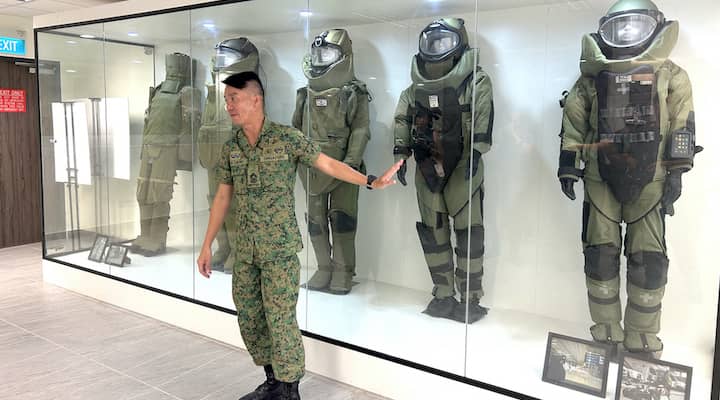
“The bomb suit is heavy and very hot. The heat build-up in the suit is tremendous. When an operator dons the suit, in just five to 10 minutes, you start to see it dripping with sweat. Sometimes, it gets so unbearable, but our guys are trained to withstand it,” shares 1WO Chong.
To allow their bodies to adapt to the heat and weight, they spend increasing amounts of time wearing the suit. This conditioning is essential because they may need to wear it for extended periods during operations.
This meticulous training regimen is a testament to the importance of precision and readiness, as EOD operators are entrusted with the critical task of ensuring safety and security in the face of explosive threats.

A “High Risk, High Reward” Job
The EOD unit may be the experts when it comes to explosives, but they don’t work alone. The recent bomb disposal mission at Upper Bukit Timah, for example, was a tightly-choreographed collaboration involving multiple agencies.
When the 100kg World War II bomb was first unearthed, they jumped into action to plan out the cordons and evacuation zones, as well as the construction of protective works, to ensure the safety of the public.
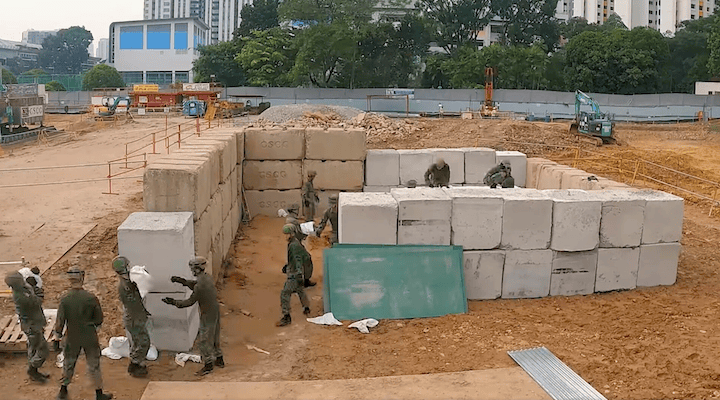
They then consulted with various agencies, including the Singapore Police Force to manage public safety, the Singapore Civil Defence Force for essential medical coverage, the Housing Development Board to assess the impact on residential buildings and infrastructure, the Land Transport Authority to enforce road closures in the affected area, the Building and Construction Authority to evaluate the structural integrity of surrounding buildings, and the Infocomm Media Development Authority to ensure the safety of underground cables in the area.
Schools in the immediate vicinity of the operation were also consulted to minimise disruptions, especially since it was during the examination period.
“There was a lot of work that went on. We had to wake up as early as four or five in the morning. Nobody saw the sweat and tears, and we also had to fight the heat when building the protective works,” LTC Ng recalls.
“The things that we go through are not always seen in movies. There is no Andy Lau in the unit, or that one person who is the ‘hero’. It’s always a team effort; such operations can never be done by just one person.”
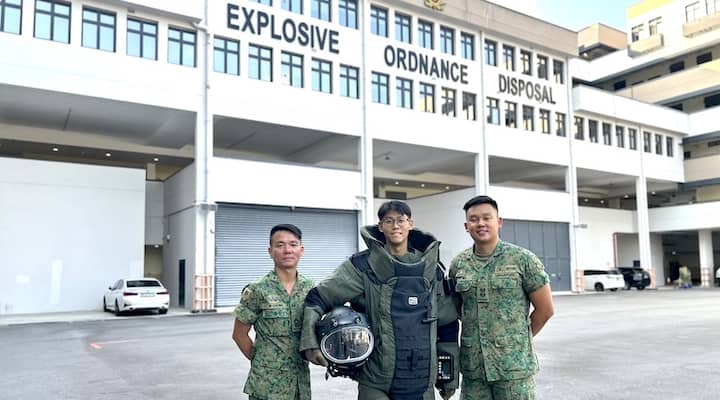


Want more stories like this in your inbox? Subscribe to the Challenge newsletter.
- POSTED ON
Nov 21, 2023
- TEXT BY
Zafirah Salim
- PHOTOS BY
Zafirah Salim









